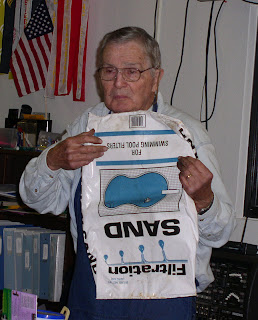Back for the third year at the Edison and Ford Winter Estates, “Art in Bloom” is a one-day exhibit of art and floral design. The task of the designers is to interpret the art using floral design. The designs are created by members of the Fort Myers-Lee County Garden Council and other floral designers and displayed along with the art from the Edison and Ford Winter Estates that inspired them.
The exhibit takes place inside the Caretaker’s Cottage on the Winter Estates grounds.
A hospitality tent is set up outside the cottage.
Plants are always for sale at the Estates. Both Thomas Edison and his wife Mina treasured the flora on their estate.
Displays set up on the right as you enter the adjoining room.
Each floral design is right next to the art work that inspired the design.
Displays set up on the left as you enter the adjoining room
Floral design #1 by Winnie Stone
The artwork is entitled “Fire Flies” by Buell Whitehead.
A close-up of the design
Floral design #2 by Debbie Wyatt-Stotter
The artwork is entitled “Cabbage Palms and Wood Storks” by Florence Sansom.
Floral design #3 by Terry Pinck
The artwork is entitled ‘The Storks” by Florence Sansom.
A close-up of the design
Floral design #4 by Paula Novander
The artwork is entitled “Ompa Pa” by Leoma Lovegrove.
Floral design #5 by Kathryn Patterson
The artwork is entitled “McGregor Long Ago” by Florence Sansom.
A close-up of the design
Floral design #6 by Brenda Norris
The artwork is entitled “Moonlight Garden” by Marie Dwyer.
The painting by Marie Dwyer
A close-up of the design
Floral design #7 by Pat Grulke
The artwork is “Flamingo Canvas” by Leoma Lovegrove.
A close-up of the design
Floral design #8 by Mary King
The artwork is “Orange Pickers” by Florence Sansom.
A closer view of the design
Floral design # 9 by Julia Palmer
The piggy bank is “ The Pink Dotted Pig” by Karen Flanders.
Floral design #10 by Suzy Valentine
The artwork is “Ponce de Leon Meets Thomas Edison” by Doug MacGregor.
Floral design #11 by Todd Roy
The artwork is “Edison Home” by Kim Harbor.
Floral design #12 by Joyce Pilewski
The artwork is “The Picnic” by Florence Sansom.
Floral design #13 by Kathleen Gary
The artwork is “Indian Man Cooking” by Florence Sansom
Floral design #15 by Carole Lachmann.
The artwork is “Copra Time” by Buell Whitehead.
The painting “Copra Time”
Exhibit Floral Design by Debbie Hughes
The artwork is “Bowl” by Augusta Crane
Exhibit Floral Design
Exhibit Floral Design by Debbie Hughes
The artwork is “My Cottage” by Marie Dyer.
Exhibit Floral Design by Ena McGrattan
The artwork is “William Henry’s Boat” by Buell Whitehead.
“William Henry’s Boat”
A detail of the design
Visitors can determine a “People’s Choice Award” by voting for their top three choices. I noticed quite a few people studying the floral designs and their accompanying artwork in order to cast a vote for their favorite design. I thought that the floral designs and artwork were all wonderful, but the people have spoken, and the winners of the awards were:
First place, #11, Floral Designer Todd Roy with Artist Kim Harbor and “Edison Home;”
Second place, #8, Floral Designer Mary King with Artist Florence Sansom and “Orange Pickers;”
Third place, #3, Floral Designer Terry Pinck with Artist Florence Sansom and “The Storks.”
Second place, #8, Floral Designer Mary King with Artist Florence Sansom and “Orange Pickers;”
Third place, #3, Floral Designer Terry Pinck with Artist Florence Sansom and “The Storks.”

























































